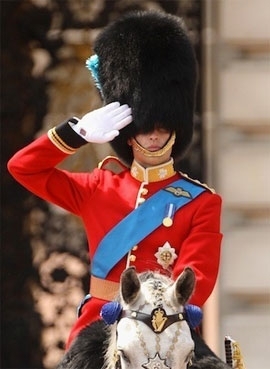
After the military made a public appeal to #SaluteOurForces leading up to the yearly celebration of Armed Forces Day, we thought we’d analyse the origins of the humble gesture.
It's not something you see every day but it’s a wonderful bit of theatre when you do.
As with many protocols, there’s a secret language to the salute and different expressions of the act of saluting. The very basis of the salute is something worth pondering at a time when recognition of a soldier's duty or standing can vary at medal ceremonies.
It has been said that the gesture began in medieval times when knights use to raise their visors in the hope of removing suspicion, but this theory has been met with scepticism. The modern form of salute is not recorded before the early 18th century.
The salute likely developed in response to a change in military headgear. After metal helmets fell out of favour, soldiers wore hats similar to those of civilians. Like civilians they raised their hats when greeting a superior.
By the 18th century Grenadier Guards were wearing tall, conical hats held in place with secure chinstraps that were difficult to raise in greeting. The men began to merely touch their hats as if intending to raise them. Soon other soldiers adopted the shako, busby or bearskin, all of which were held in place by a chinstrap.
This action was formalised as the salute in European armies by about 1780, and from them spread to the rest of the world.
comments powered by Disqus